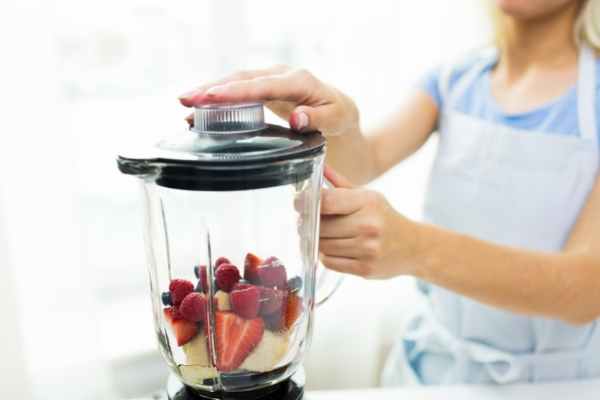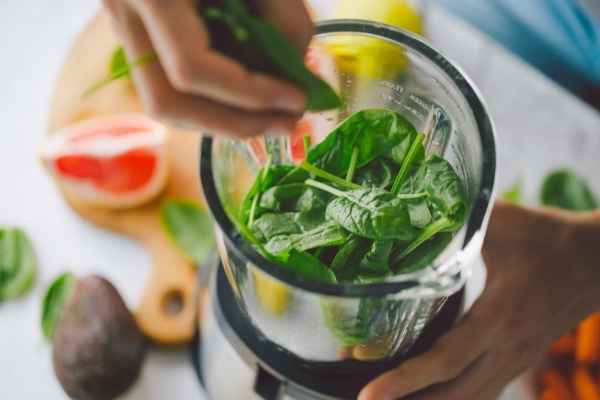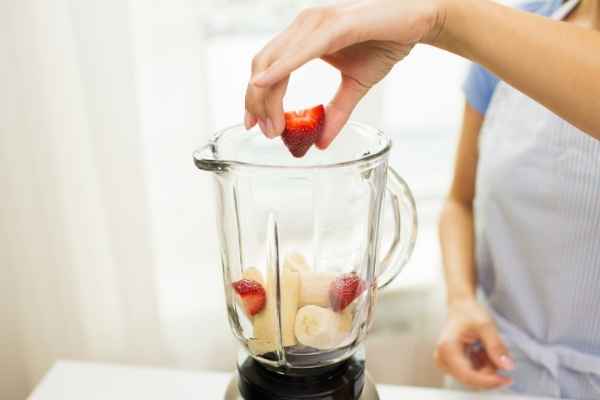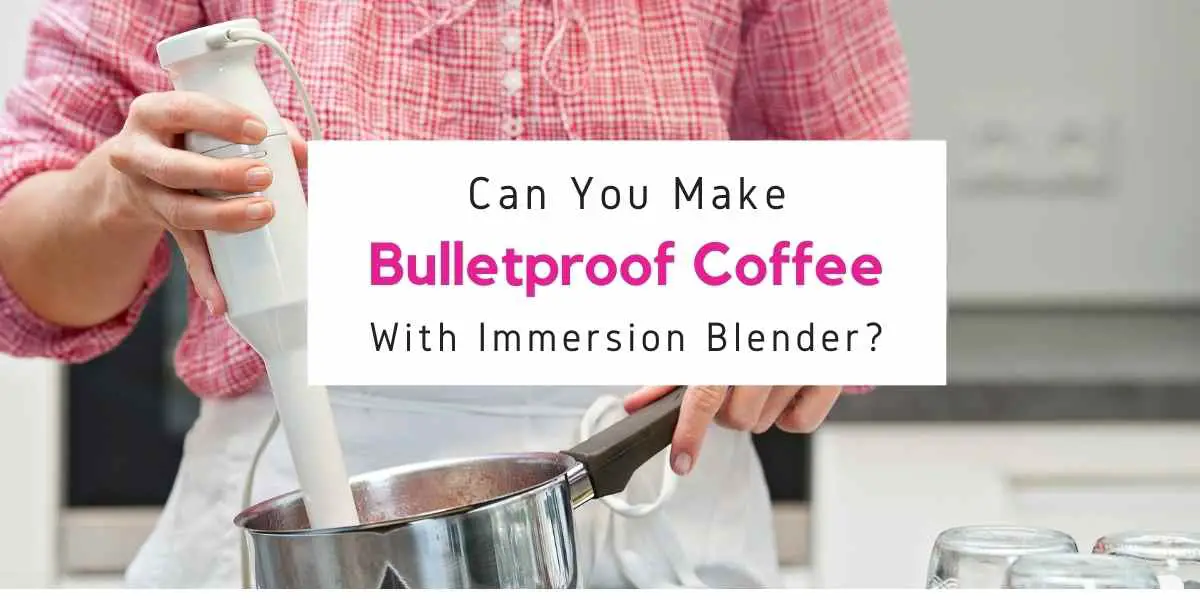Blenders can be a lot of fun, but they are not always easy to use.
When your blender is spinning but not blending you may think there is something wrong with the machine or that it’s about to break down. But often the problem lies in the user’s technique or in what they are trying to do with their blender.
This article will cover some common causes for blender blades spinning but not blending as well as tips on how you can troubleshoot them so that you get back to blending again!
Blender Spinning But Not Blending – Troubleshooting Guide

What to check if you have a blender that’s rotating but not blending – Troubleshooting Steps:
Check Power Settings
One of the most common causes for when your blender turns on but won’t blend is that the power settings on your blender are not set properly.
If you have a variable speed blender make sure you’ve found the right level for what you’re trying to blend (a low setting for milling and a high one for whipping cream) and if it’s a simple on/off model make sure you’ve turned it on!
Check Blender Settings
Many blenders have special features designed to help when making certain items such as smoothies, milkshakes or crushing ice. These settings can often come in really handy but also sometimes get activated accidentally when they shouldn’t be which is why it’s good to check that these features aren’t being used when they aren’t needed.
Make sure you’ve disabled your smoothie or milkshake setting if you’re trying to mill flour.
Check Ingredients and Tool Fit
Sometimes the reason you’re not getting a good blend might be because your ingredients just aren’t up to it – too chunky, too frozen or maybe they don’t fit in through the top of the jug which is stopping them from being blended properly.
Make sure you’ve cut everything into reasonable chunks (you can use wooden skewers for this) and make sure that milk bottles are squashed flat before putting them in the freezer!
You might also need to chop things like nuts or chocolate into smaller pieces. For items that won’t fit through the top of your blender try using a spoon or spatula to push them down from the top or use a longer tool that will reach further into your blender.
Tip: If you’re milling flour or powder in your blender it’s best to use the pulse function to avoid sending clouds of this potentially dangerous substance all over you and your kitchen!
Check Your Blender Jug is Securely Attached
If your blender jug doesn’t sit properly on top of the motor unit there might be some movement that stops the blender from blending things properly.
Make sure that the lid is securely attached on top of the jug and then check that it sits flat on top of the jug without any gaps between them.
You may also want to try holding on to both parts for extra security when making difficult items like milkshakes.
Check Motor Unit is Working Properly
Sometimes a blender will appear to be spinning but not blending because it’s not getting the power from its motor unit to do so.
Ensure that your power cord is inserted correctly and check to make sure that there isn’t anything obstructing the electrical connection between the appliance and the wall – this might simply necessitate moving your blender away from a cooker or hob as sometimes overhanging elements can affect electrics.
If that doesn’t resolve things then take a look at your fusebox/circuit breaker as there may have been a problem with either of those which means you need to switch them both off for half an hour before trying again. If there hasn’t, then contact a repair person about replacing the motor or cord on your blender if neither of these solve the problem.
Tip: If you use a blender a lot then it’s a good idea to have a spare power cord on hand just in case something goes wrong with your current one – they’re easy to fit and available from most supermarkets or electronic stores.
Check Power Leads for Damaged Parts
Ensure that no parts of the electrical cords are cracked or broken as this can sometimes cause problems even if other parts look ok.
If there is any damage then the whole power lead needs to be replaced before using your appliance again.
Check That You Have Enough Liquid In The Blender
This may seem like a no-brainer, but many people do not realize how much liquid you should actually be using when blending.
The rule of thumb for which liquids work best as part of your smoothie recipe is as follows: If it’s too thick to drink through a straw, then you should add more liquid.
Avoid Running The Blender At Full Speed And Load For Prolonged Periods
When trying out new recipes we often want to see just how well the blender performs. Unfortunately, this can lead to unnecessary wear and tear on the blender if it is run at full speed for too long.
If you are having trouble figuring out your blend cycle or which setting is best for your smoothie, then try mixing each of them separately until you find the perfect one! After all, practice makes perfect!
Check That Your Blades Are Attached Properly
This tip seems like something that would be common sense but unfortunately it isn’t as straightforward as it might seem.
The most common mistake with blade attachments is not making sure they are on tight enough. This can easily be fixed by ensuring that the blade attachment has been pushed down all the way so there are no gaps between the blade and the jar.
Check That Your Blender Is Not Broken
If you have tried all of the above and your blender would spin but still does not blend, then it would be worthwhile checking whether or not there is a problem with its electrical components.
The first thing to do would be to unplug the cord from the wall and give it a gentle shake. If this does not work, you can try removing and cleaning all parts of the lid before reassembling them again.
If these steps are unsuccessful, your next step should be to call customer service!

Related Post: Blender RPM
What NOT To Do If Blender Is Spinning But Not Blending
Do Not Use Your Blender For Extended Periods Of Time Without Checking If It Is Blending Properly
This tip seems a lot more obvious than some others on this list, but it’s important to keep in mind that sometimes the simplest problems are the hardest to fix.
If you find yourself having difficulty blending your smoothies for more than a few minutes at a time, then try sitting down with the blender and reading over the manual or watching a helpful video!
Do Not Add Too Many Ice Cubes Or Frozen Items
Although being able to make tasty smoothies can often be rewarding, there is nothing worse than waiting forever for them to blend only to have your blender struggle and leave chunks of fruit behind.
To avoid this problem, try using things like frozen fruit or ice cubes when you are making your smoothies. This way you will be able to enjoy the refreshing taste of a blended drink without having to worry about it not getting blended!
Do Not Add Dry Ingredients With Wet Ones
It is important that you pay attention to the order in which you load your blender when making a smoothie.
If you add powder or other dry ingredients and then try and blend them with liquids, there is a good chance they won’t get properly mixed and this can result in chunks of undissolved powders at the bottom of the jar.
Try putting any powder based items into your dish first before adding liquids if this becomes an issue for your smoothie making process.

Related Post: Ninja Blender Blades Not Spinning
Blender Does Spin But Doesn’t Blend – Conclusion
The blender is one of the most useful appliances in your kitchen but it is not always easy to know when there is something wrong with it.
If you are having trouble figuring out why your blender does not blend properly then try following these simple steps and hopefully they will help you get back on track.
Check out the resolution for blender that is not spinning.
Related Blender Issues


